A scope of work (SOW) is an agreement that describes the work to be completed as part of a contract.
When working with people outside your organization, it’s easy for misunderstandings or assumptions to hinder a project. The SOW template is also essential, as it specifies dates, project milestones, payment arrangements, the number of revisions involved, and the deadlines for completing specific deliverables and services.
The client and the outside contractor sign it. It ensures that the client and the contractor agree when it comes to project expectations.
Scope of Work Templates
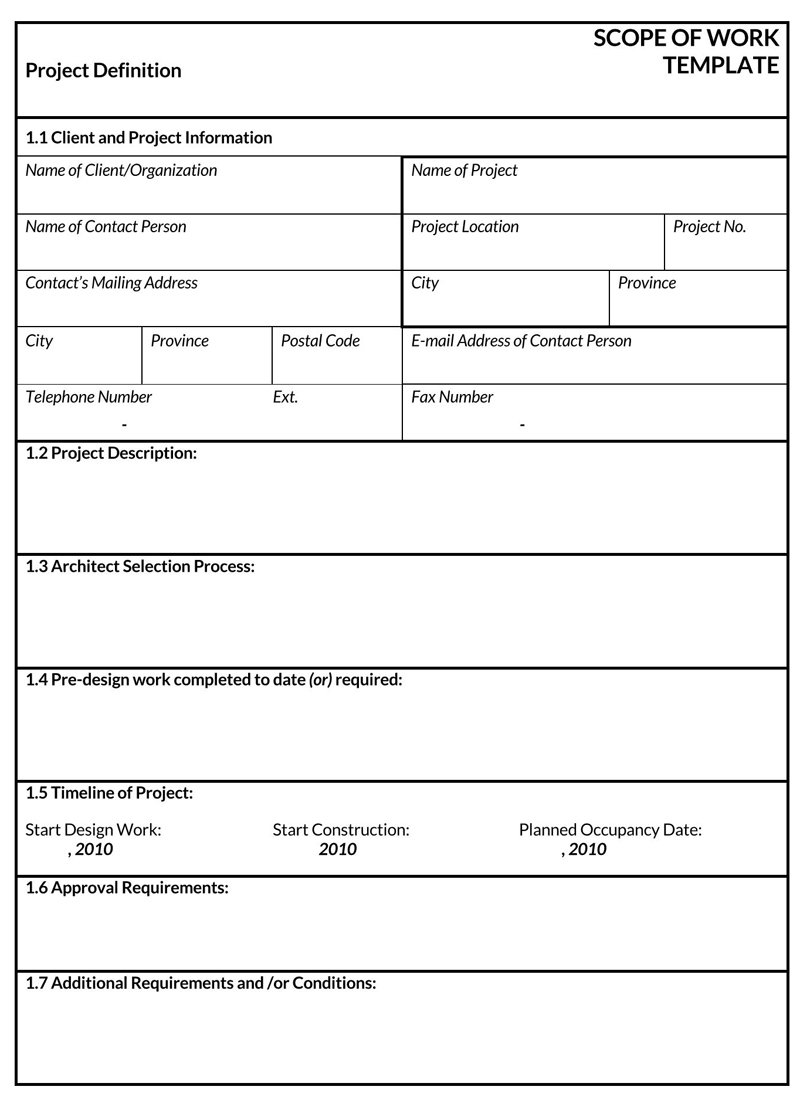
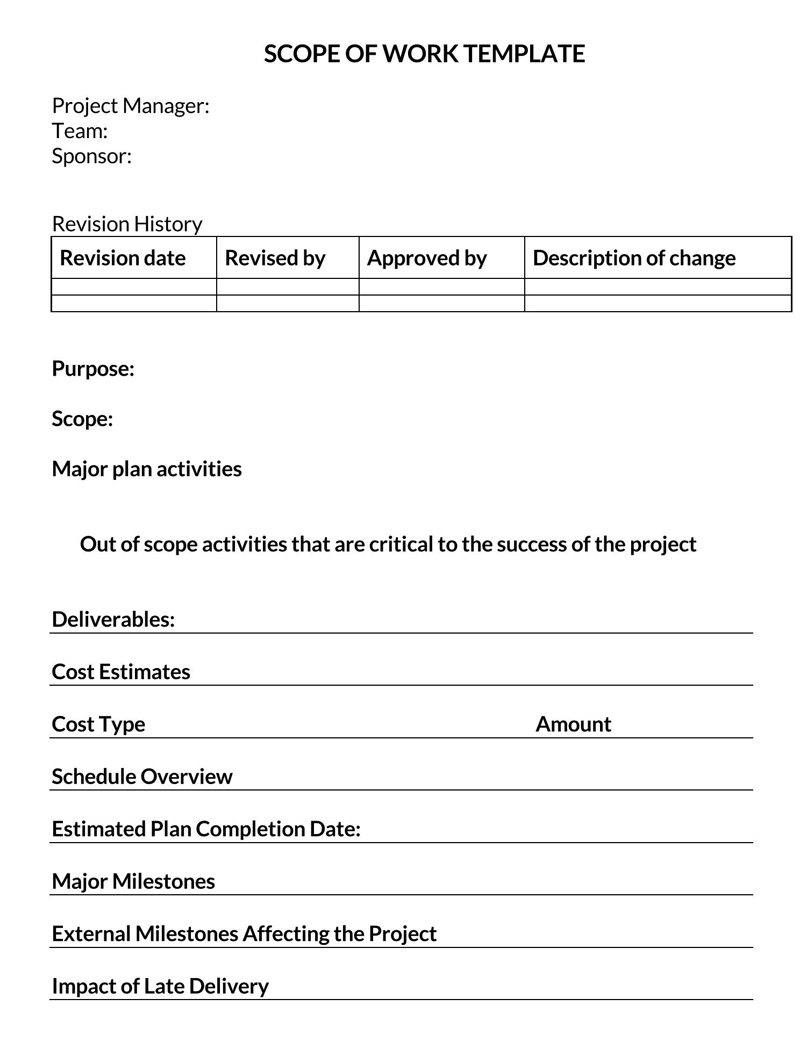
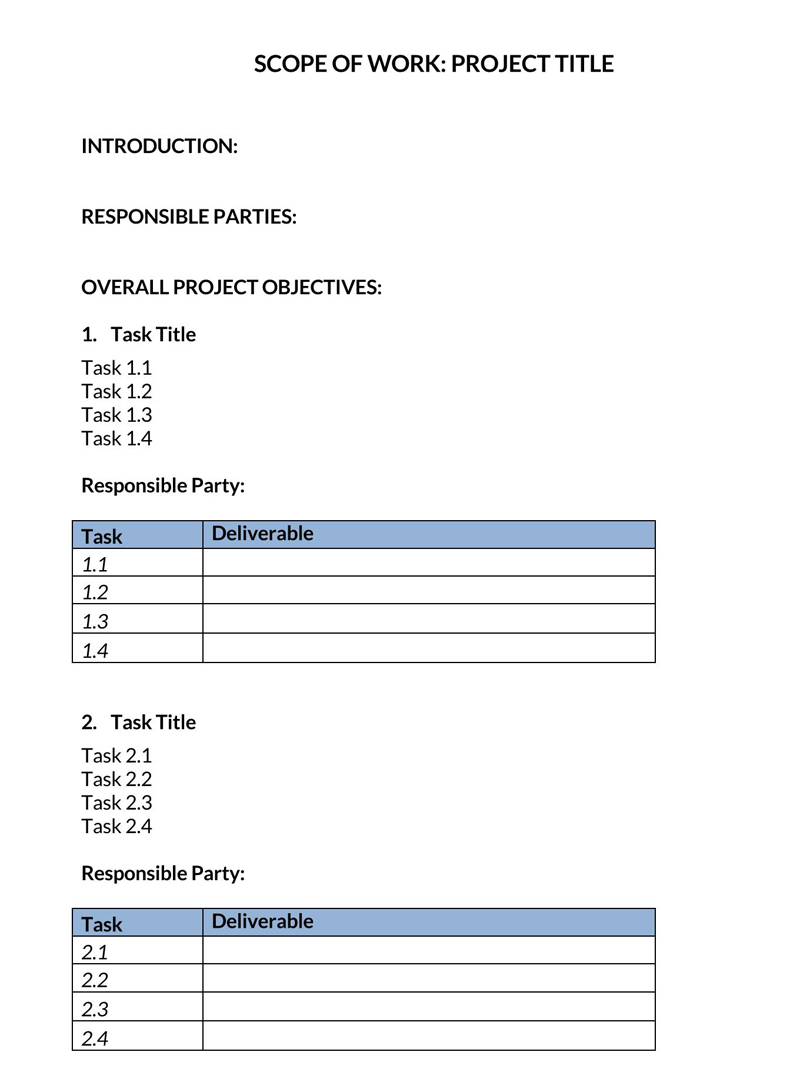
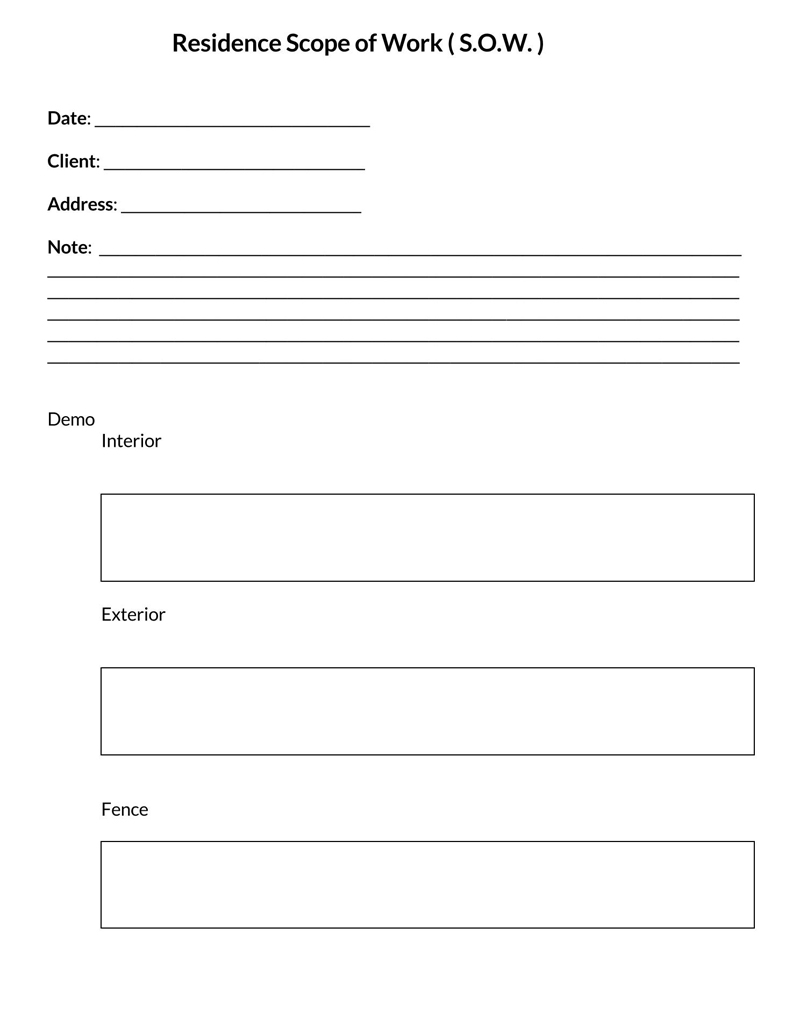
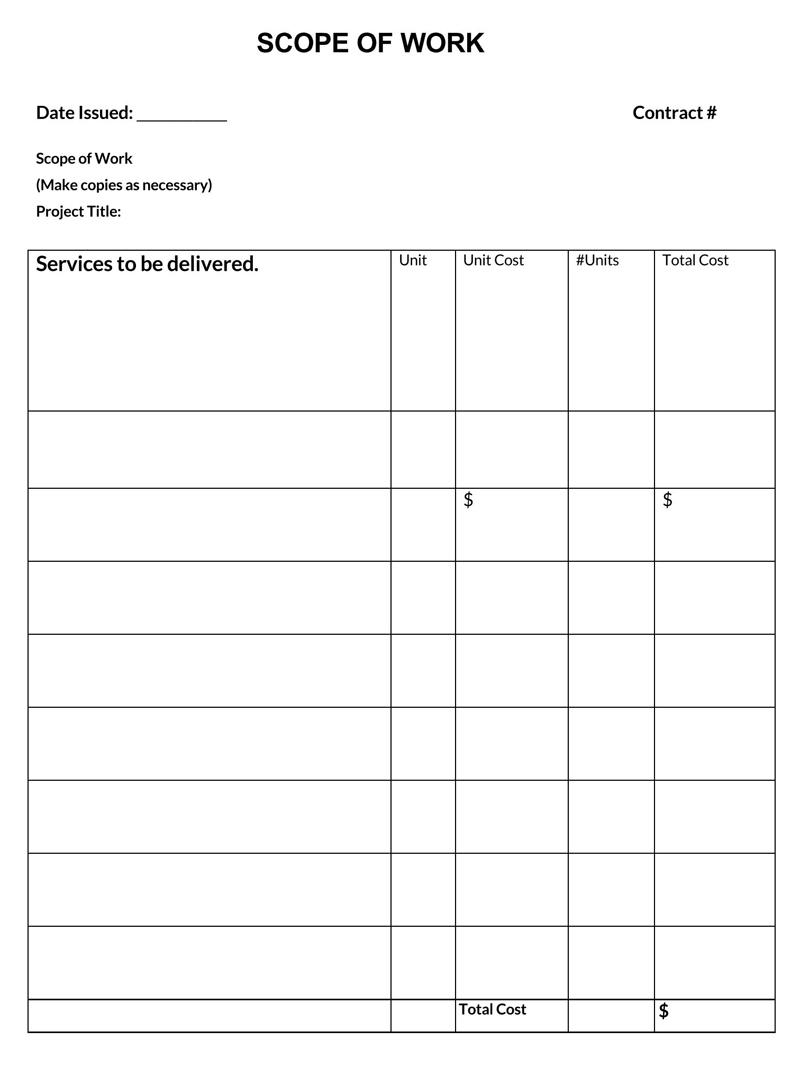
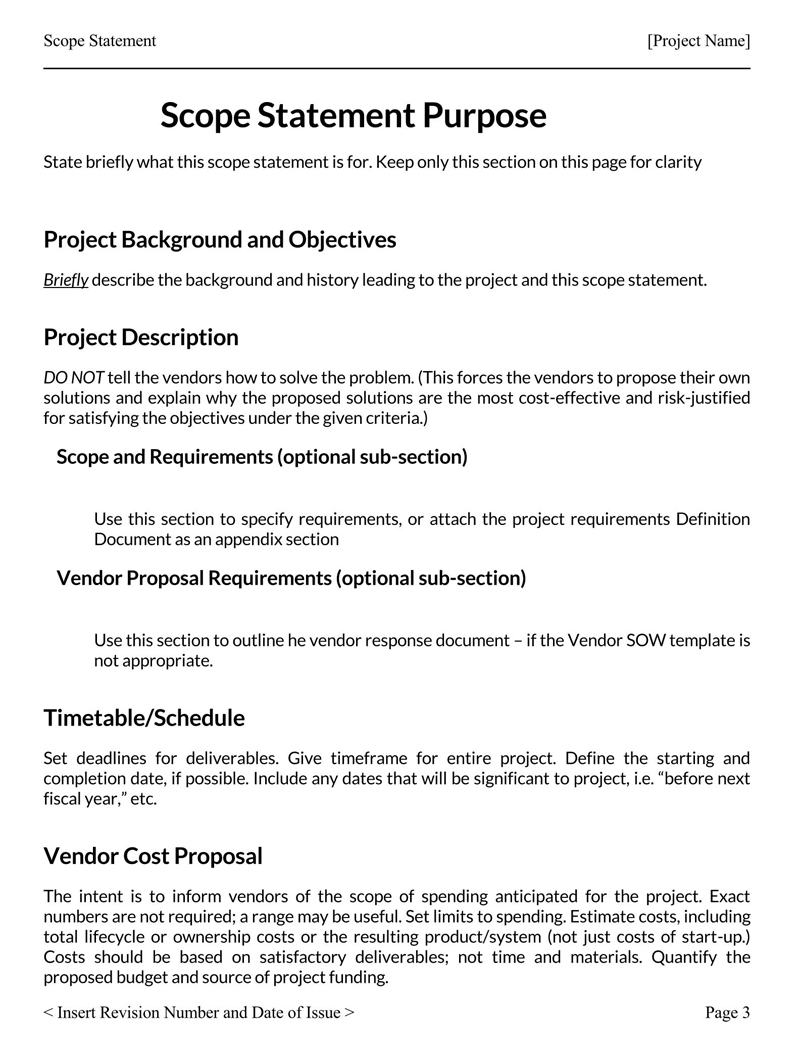
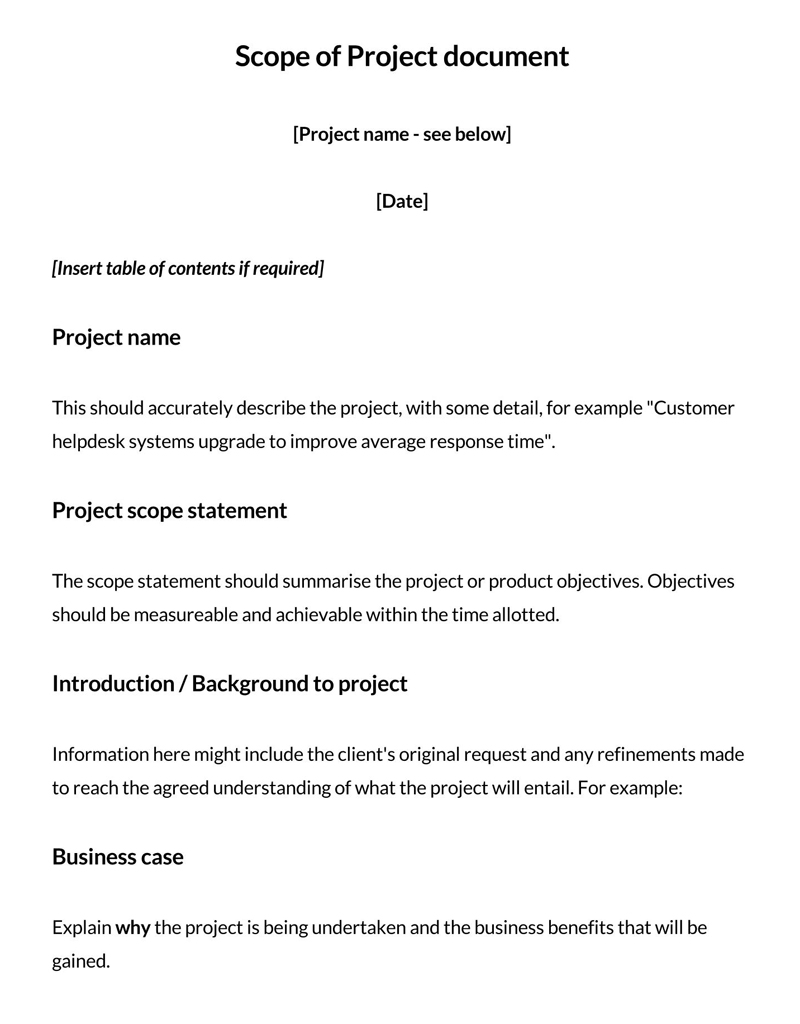
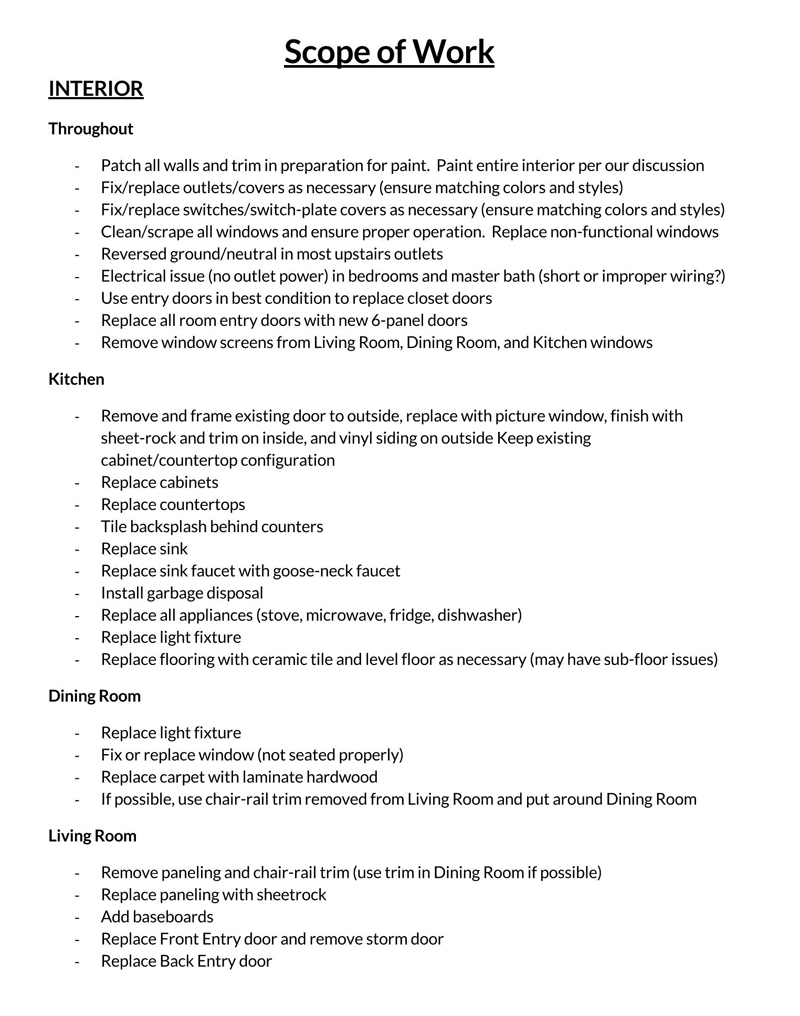
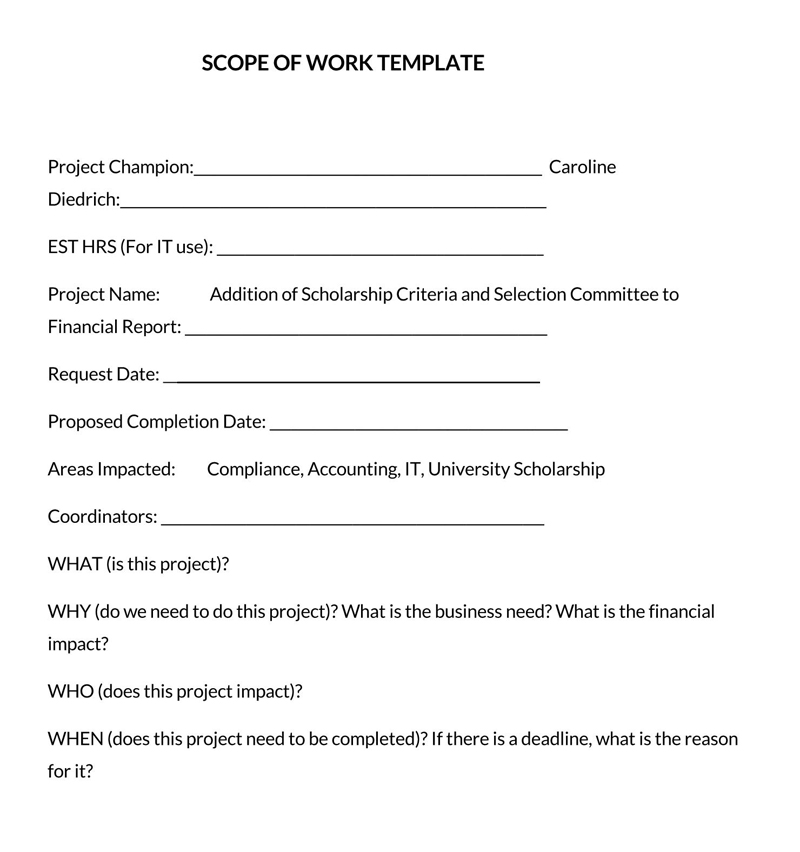
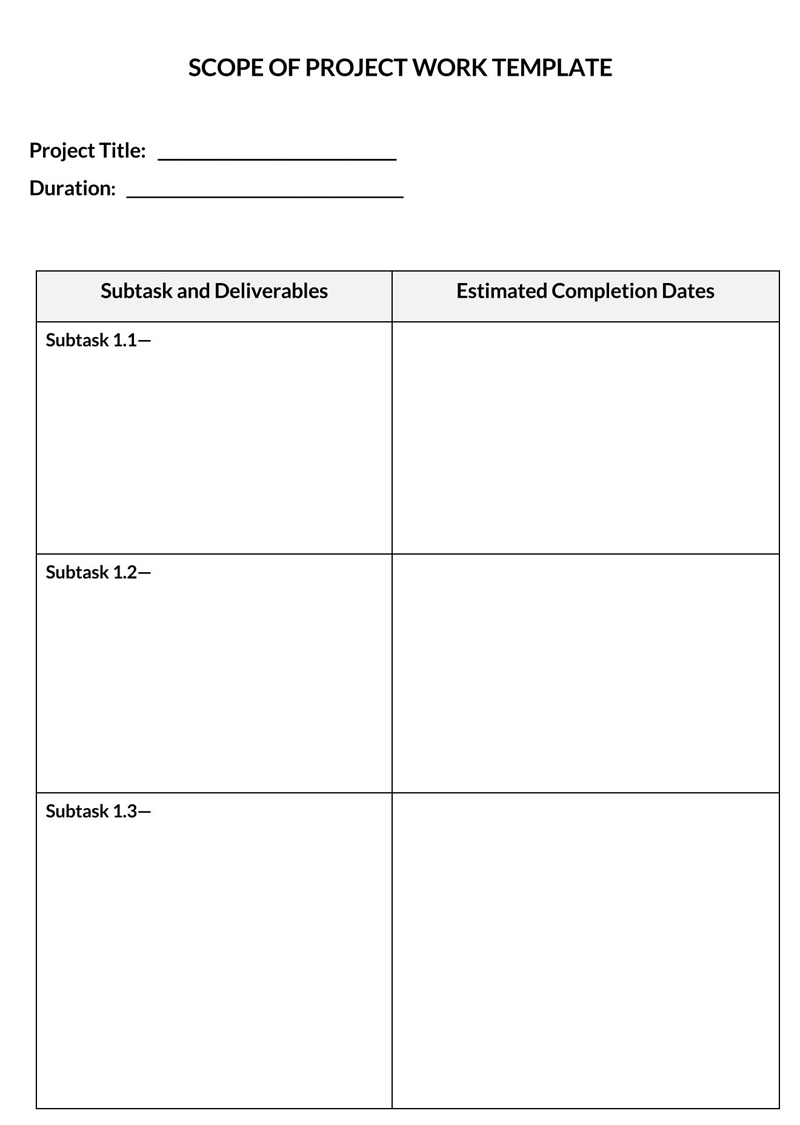
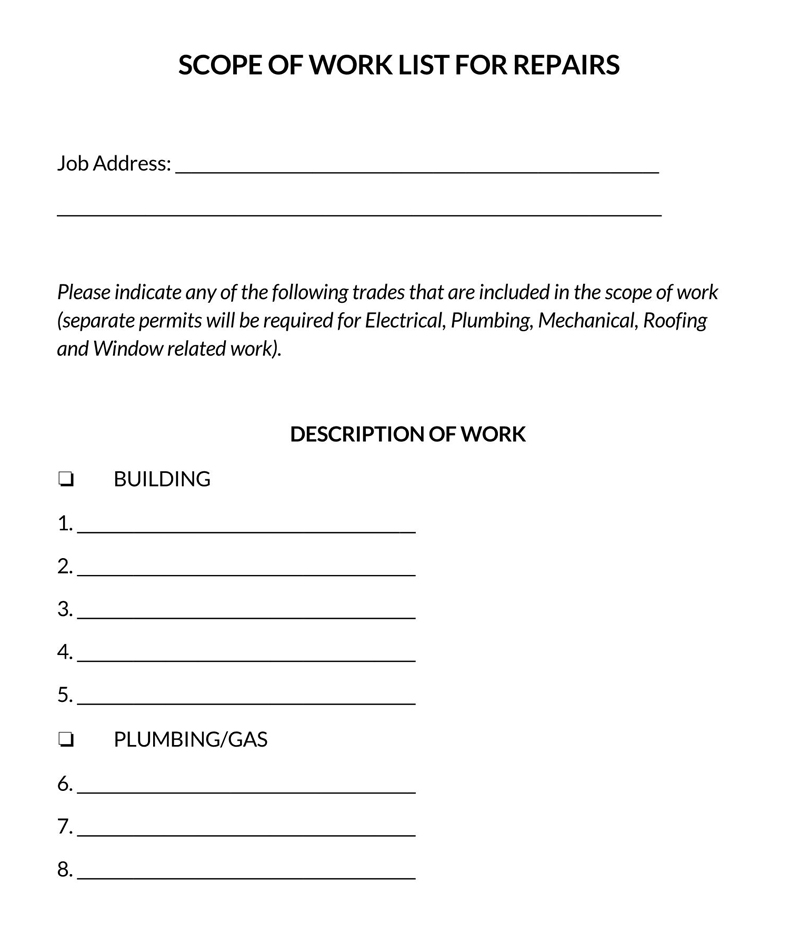
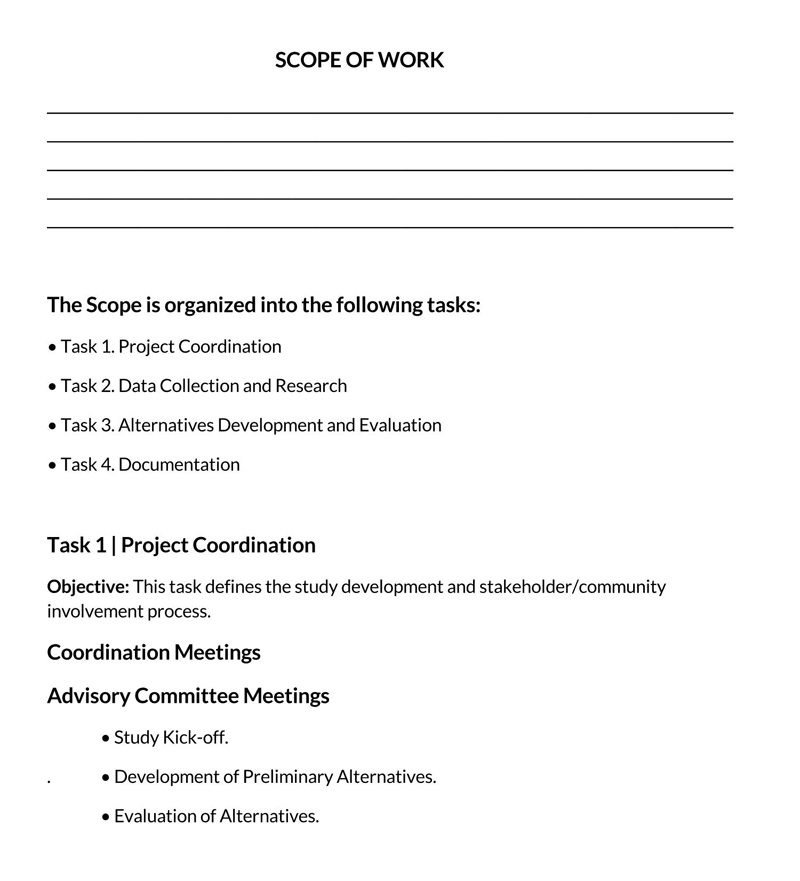
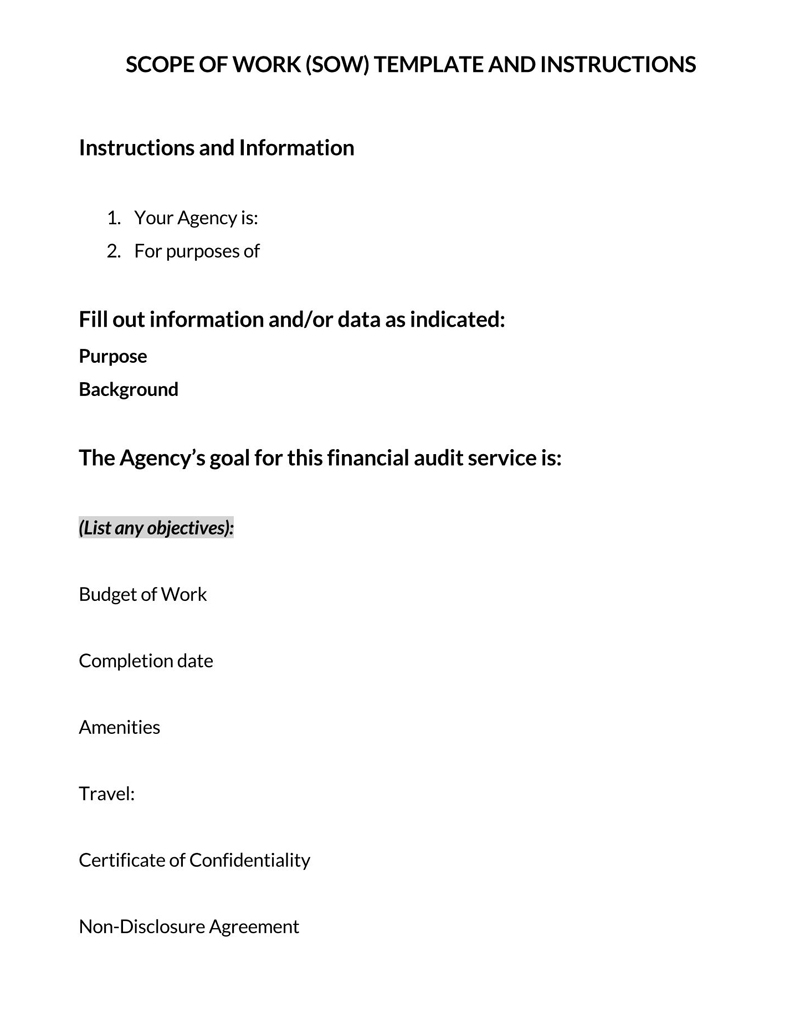
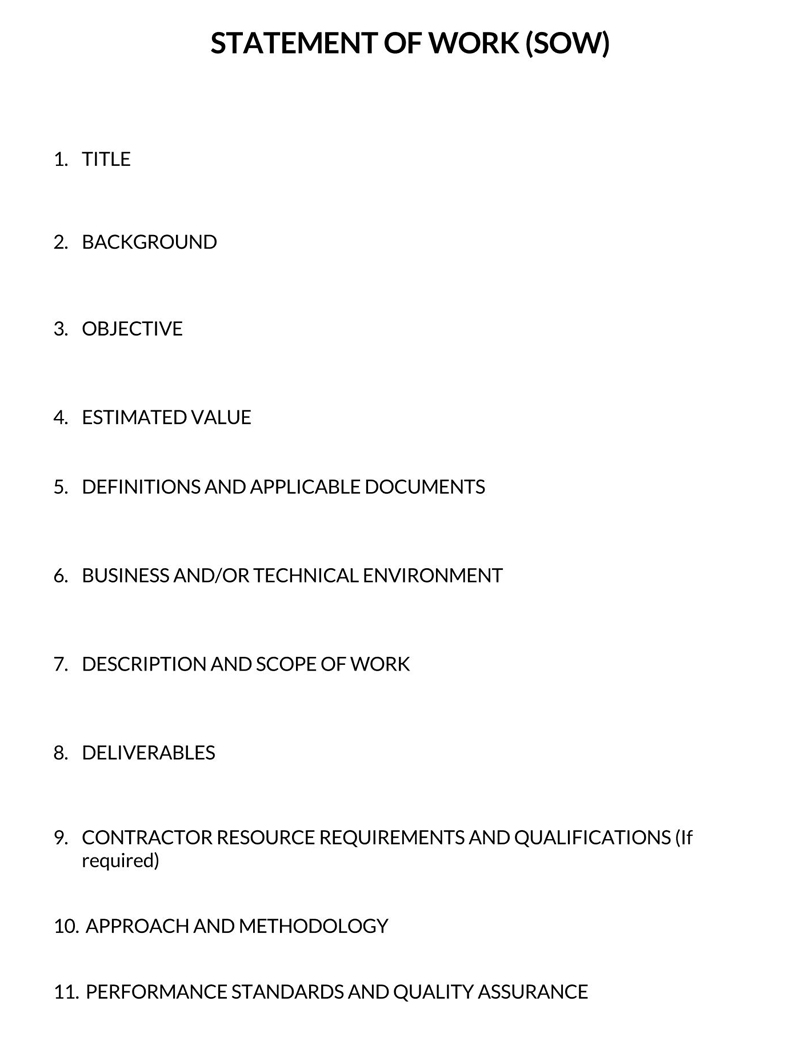
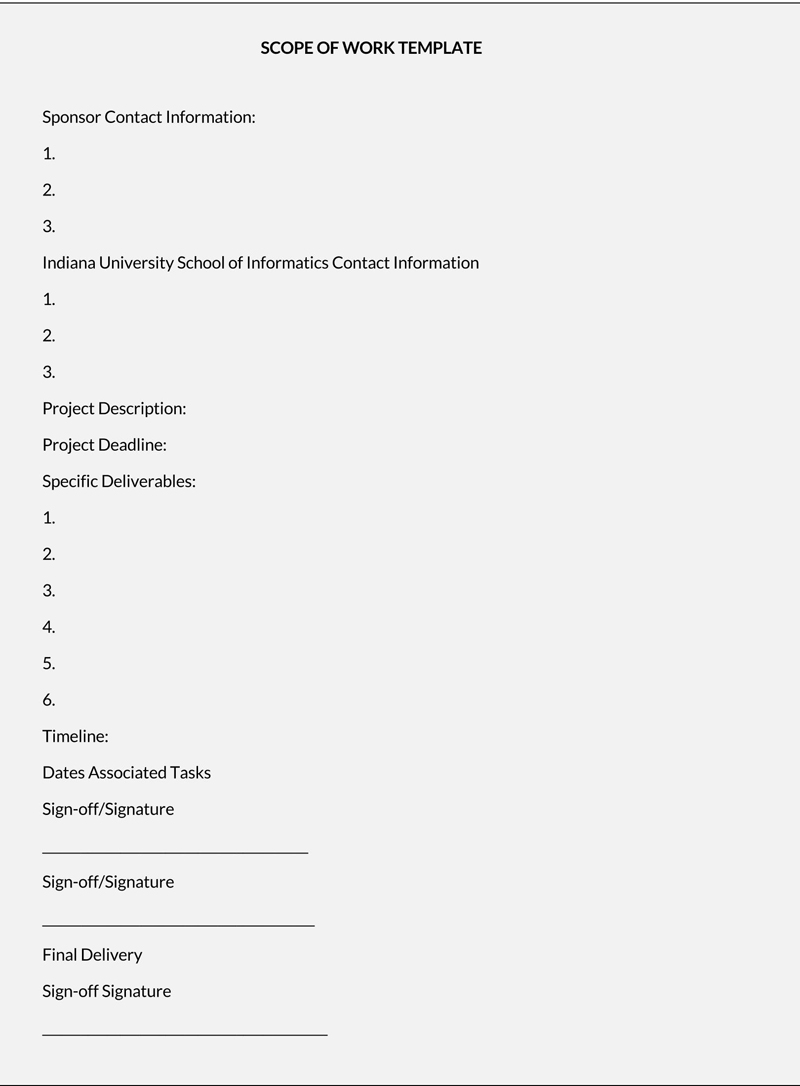
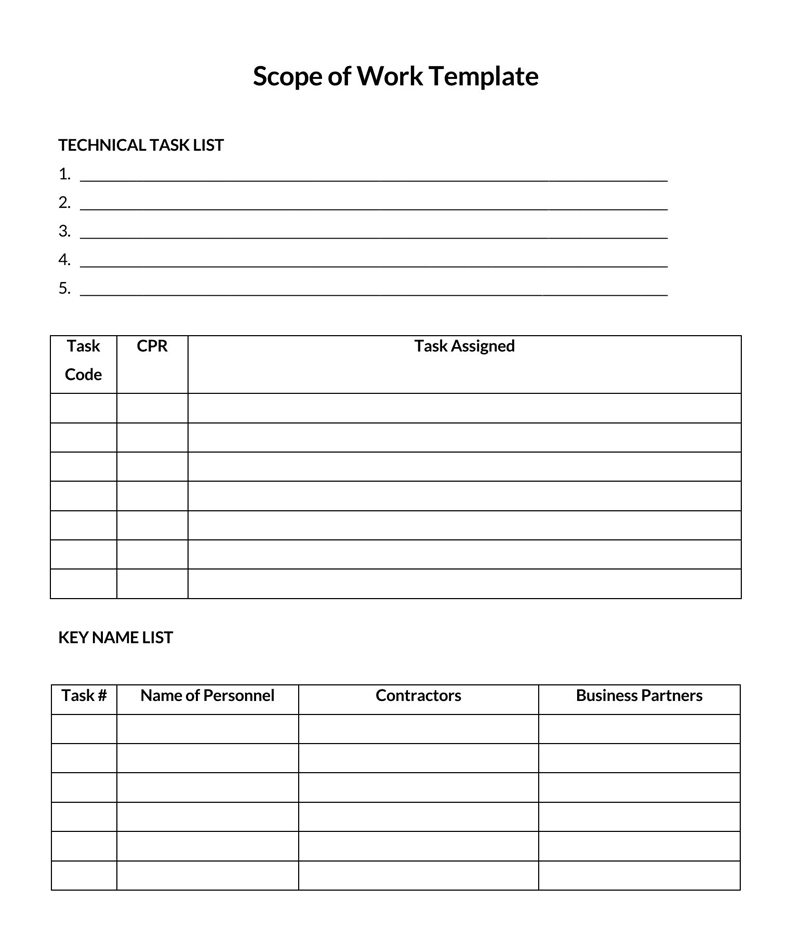
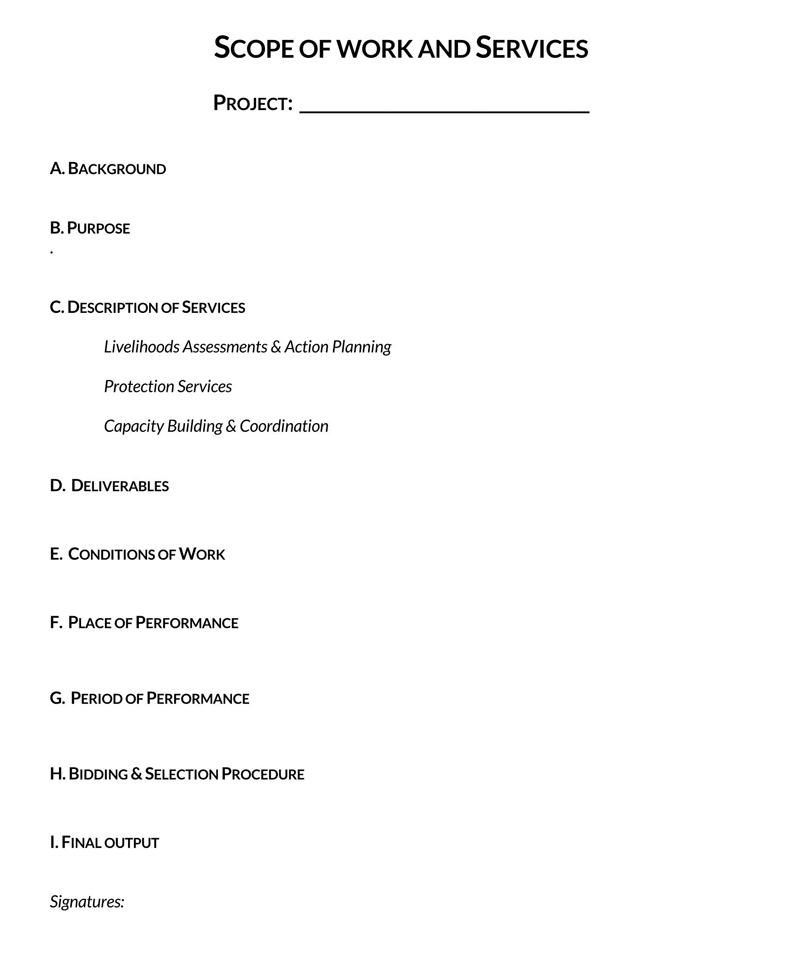
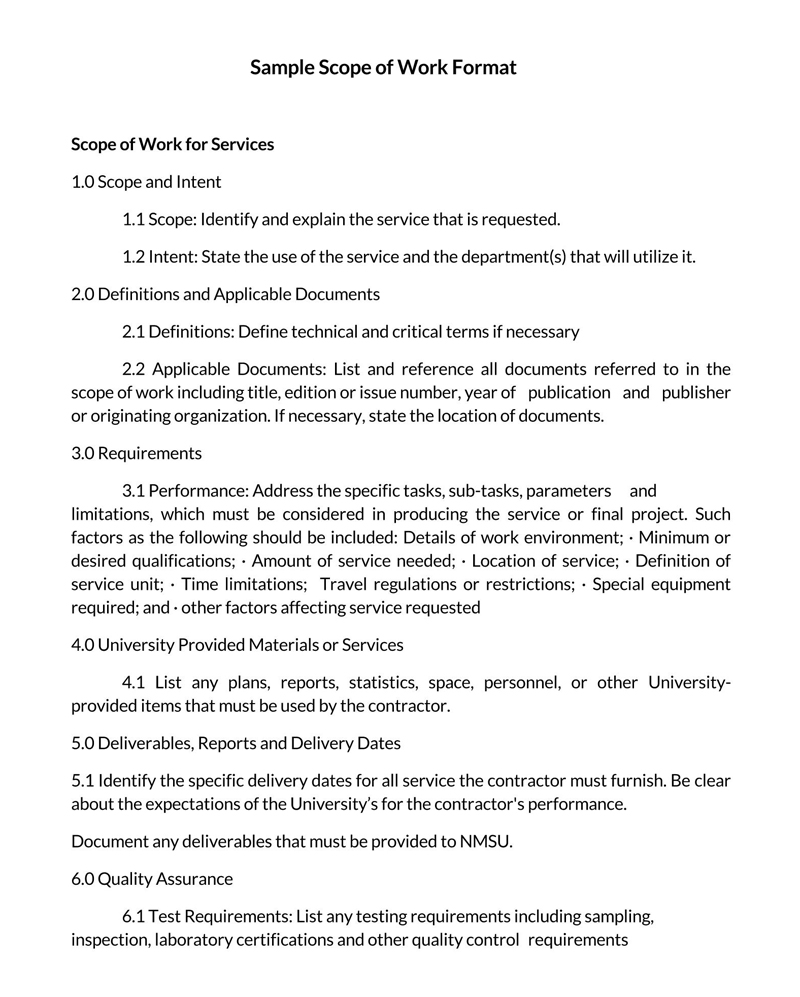
How Does a Scope of Work Help You?
A well-written scope of work, also known as the statement of work form, prevents a contractor from working outside the client’s intended scope, ensuring that the project stays on budget and schedule.
It also prevents various obstacles, such as disputes over the amount of work, miscommunication, unfinished/neglected work since the scope is defined in the agreement, and misinterpretation of the expected final results.
The document also eliminates any doubts a client has on a particular project, such as costs and resources, and also brings accountability by making the contractor liable for lawsuits in case something goes wrong with the project.
EXAMPLE
An example of things that can go wrong include not completing the project according to the agreement.
There are two common uses of a scope of work. It can be used for an agency or independent consulting. In this section, we have described these two instances in detail.
For independent consulting
Independent consultants provide advice to customers or companies on how to achieve their objectives. The client hires an independent consultant to assist them in achieving their goals, which could include lowering expenses, increasing productivity, or switching from one company model to another.
The scope of work for independent consulting helps a consultant finish a client’s assignments. It establishes project boundaries, metrics, and measurements for project goals and objectives.
For an agency
The scope of work for agencies is nearly identical to that for contractors. It ensures that the client is not exploited by the contractor. It also ensures that the contractor does not do anything that has not been specified.
However, because of its necessity, a poorly drafted or overly broad scope of work can make a project unreasonably complicated or costly. Creating a well-crafted document is critical.
Scope of Work vs. Schedule of Work
A schedule of work is a detailed method of project management that defines exact deadlines and requirements that the client expects to be met every day. Schedules of work have the advantage of providing client with complete visibility into the various phases of the project and the distribution of their resources. The scope of work outlines the work to be done, who will do it, and the intended objectives.
Components of a Scope of Work Template
An adequate scope of work ensures that the desired expectations are clear. In addition, it prevents any future misunderstandings between the client and the contractor. This part of the article describes the various components of a practical scope of work template agreement to guide you when crafting one.
The components are the following:
Project introduction
It would be best to start with the general information and work on the more detailed elements before jumping into the project details. This section briefly outlines the project’s scope of work template and identifies the client and the contractor involved with the project. The introduction also covers the types of formal agreements that can be created later, a standing offer and a contract. A standing offer is a commitment to purchase a service or product at a set price for a set period. A contract is a more formal, lawful agreement based on details that have been mutually agreed upon.
Overview/objectives/goals
The project overview, goals, or objectives are the results that are expected at the end of the project. After covering the fundamentals, define the project’s primary purpose and the client’s and contractor’s results. The objectives should be clear. Every worker involved in the project should be able to understand what objectives the client wants to achieve at the end.
Description of services or goods
Goods are tangible objects that are placed in the market for purchasing, promotion, or consumption, whereas a service is an intangible item that results from the work of one or more people. The client should include a section where the contractor will describe the types of services or goods they will provide.
Deliverables
This is the section where what a client will receive at the end of the project is detailed. Whatever the deliverable is—either a document or report, software, a product, or a building—they must be identified here. This stage can be simplified by creating a work breakdown strategy. Deliverables can be measured by stage, duration, project completion date, and so on. Deliverables can be both material and intangible. Deliverables should be quantifiable, regardless of how they are measured.
Milestones
A milestone is a moment in the life cycle of a project that is used to monitor progress toward the end goal. Milestones are used as markers for a project’s start or finish date, external evaluations or input, budget checks, and the submission of a significant deliverable in project management. Milestones help the client monitor their project’s progress and see if the contractor is on schedule.
Adoption plan
The procedure through which the contractor will execute the deliverables is referred to as an adoption plan.
EXAMPLE
When a client is migrating their new website to their old domain. Basically, an adoption plan is a process through which deliverables will be put in place.
Project timeline/period of performance
When it comes to pricing a project, time is usually one of the most critical elements. The project timeline section estimates and specifies how long each milestone will take to complete, as well as the estimated project completion time. As you might expect, sketching out the overall plan of any project is essential.
The timeline also marks places in the project where the client’s objectives have been delivered. This is best illustrated visually so that all stakeholders can see the big picture. An open-ended project timeline should never be included in the template. Instead, set a limited amount of time spent without consent or notification if you need more flexibility.
Variables
Cost, schedule, resources, and the technology necessary for each project phase are all variables from start to finish. Therefore, everything that has been included or excluded should be clearly defined for each variable.
Requirements
All items required to support the project are included in the requirements. Define the terms you’ll use in the scope of work template, as well as any conditions or criteria that haven’t been specified yet. Proof of originality is one of the most common requirements.
Task list/inclusion
A work breakdown structure should be used to break down tasks. First, break down your project’s broad scope into smaller, more manageable pieces. This section is significant because it also provides a timeframe for each stage. Make sure these timeframes are achievable. Tasks are defined actions that must be accomplished for the project’s deliverables to be fulfilled.
Anything not covered in the task list is considered not part of the template. It’s important to realize that tasks aren’t the same as deliverables. Tasks are the steps that should be taken. As a result, each task should specify a particular action to be executed.
Out of scope/exclusion
Anything that is outside the template is referred to as “out of scope.” The scope of a project is defined in documents such as the scope statement at the start of the project. It specifies the project’s tasks and deliverables, as well as the parties’ expectations. If a client requests an additional function or service, this may be termed “out of scope. Exclusion is a crucial element since you’ll want to exclude any deliverables or tasks that won’t be finished or delivered at the end of the project. Make it clear what this project won’t achieve and what objectives won’t be accomplished. This section is an excellent method for avoiding future misunderstandings.
Expected outcomes
The project outcomes to be delivered for the client are addressed in this section.
EXAMPLE
Will the desired project increase visitors to the client’s website or cause a specific percentage rise in sales? What is the project’s business goal, and how will it be assessed and reported on? These are some of the various questions that the expected outcome section will answer.
Terms and conditions
Define the terms that will be used in the scope of work and any conditions or needs that haven’t been specified yet. Defining the terms and conditions ensures that the project gets done according to what the client states. Payment terms, traveling necessities, and security clearance are some of the terms and conditions the client may include.
Report
Throughout the project, the client will be receiving reports from the contractor. Status reports, progress reports, and other reports are examples. They’re an official record of your project’s progress, but they’re also a way of communicating beyond whether the project is on track or not. There’s a lot of data that can serve various consumers, depending on how it is tailored. Define how the contractor will report to the client on the project and when and from whom the stakeholders will receive it.
Completion criteria and signatures
How the client will accept project deliverables is covered in the last part of the template. This refers to who will authorize them as well as how deliverables will be examined and approved. It may seem pointless to agree on this upfront, but it will help avoid significant obstacles later when you receive something unexpected. It’s important to remember that a scope of work shows clarity and detail. You’ll get a better result if you give more.
Six Must-haves for the Scope of Work
After you are done with the components of the scope of work, the following points are necessary to include or observe in it.
- Explicit details: Explicit details include information such as assumptions on the time, effort, and resources the project will take to be completed. If these details are not included, the project may take longer and cost more.
- Use of visuals: Instead of trying to explain in words, use visuals. Visualizations, images, and examples can help clarify the objectives and requirements. Visuals are also easier to remember.
- Be specific/define terminologies: Make sure that any business terminology, phrases, or acronyms in your scope of work are defined. It is important not to assume people will understand every word.
- Time for reviews: Make sure to provide room for reviews and unanticipated changes in priorities. The purpose of creating room for reviews is to allow the contractor to give their opinion on the project outcome.
- Success definitions: The most critical part of a successful SOW is that both parties agree on what success looks like. Rewrite it if you’re not sure what you want to achieve at the end.
- Get sign-off: Getting the sign-off means that everyone who needs to give the project the green light for it to start does. When everyone signs off on the objectives, they’re expressing their agreement with them. If someone wants to change the project’s scope, they’ll need to submit a new deliverable or change order.
Scope Creep
Scope creep is the process where a client expands the scope of work as the project continues or changes until it no longer corresponds to the agreement. If this happens, the contractor can take legal action if a dispute arises concerning extended work. As a result, the client and contractor need to check in before finalizing the project, especially if they believe the other is going beyond the scope of work. If the project’s scope needs to be modified, the client will need to update the agreement to contain additional notes about the pay rate, payment schedule, deliverables, etc.
Scope of Work Sample
Besides the components and tips we have given on how to write a scope of work agreement, we have also given a sample below to show you how it looks, which you can refer to when writing your own.
sample
PROVISION OF MOBILE APPLICATION SERVICES TO EFG LTD ON 20th September 2021
Objective
Client EFG will receive mobile application development services from Company HIJ in a collaborative setting to satisfy Client EFG’s business objectives. The application should be interactive, simple to use, and suit Client EFG’s marketing needs.
Service description
Company HIJ will gather requirements, analyze, design, create, test, and integrate the application per the scope of work’s rules and timelines. Provide a clear description of deliverables, processes, final products, and the process for evaluation and approval.
Deliverables and milestones
Client EFG will receive the project by a specific date, and Company HIJ will provide weekly status reports and project updates. Define the job/project start and conclusion dates and the deadlines for the various project phases and milestones.
Tasklist
- Analyze the mobile application
- Design the mobile application
- Create the mobile application
- Test the mobile application
- Project Timeline
Company HIJ will finish providing client EFG with mobile application services on September 30, 2021.
Requirements
An office for project planning
Access to the client’s parking for staff
Expected outcomes
By the end of the project, Client EFG will have encrypted and safe mobile application services.
Terms and conditions
Half of the project payment is to be made before the project starts
Security clearance is to be given to the company’s staff working on the project.
PROJECT APPROVAL SIGNATURES
Project name provision of mobile application services to EFG Ltd
Project manager, King John
Signature___________________________________
Date September 20, 2021
Tips for Writing a Scope of Work
To write an adequate scope of work template that helps you meet your objectives on time and avoid misunderstandings, there are a few good practices that you should keep in mind.
The following tips will guide you when writing one:
Keep it brief
It’s essential to pay attention to detail. However, writing a lengthy scope of work will require the contractor to review it, slowing down the process and costing money. In addition, the longer the exclusions, clauses, and exceptions are, the longer it will take to complete them, and the more uncomfortable they will be.
Write in the earlier stages of a project
The earlier you start drafting, the better. Starting the process early allows the document to develop according to your understanding of the project and the requirements.
Involve other people
If you don’t know how to write various sections, request assistance. If you’re unsure how to precisely define the requirements and infrastructure, you may need to hire a technical writer.
Be clear about what the project includes
Since requirements can be unclear, especially in software development, it’s important to know which paths to avoid and which ones to take.
Conclusion
The scope of work, often known as the SOW, has become a famous phrase in project management. This is usually a clause in a contract with a contractor. Before starting a project, it is crucial to have a thorough and precise scope of work. This will help you meet your objectives on time and avoid misunderstandings and disagreements.




